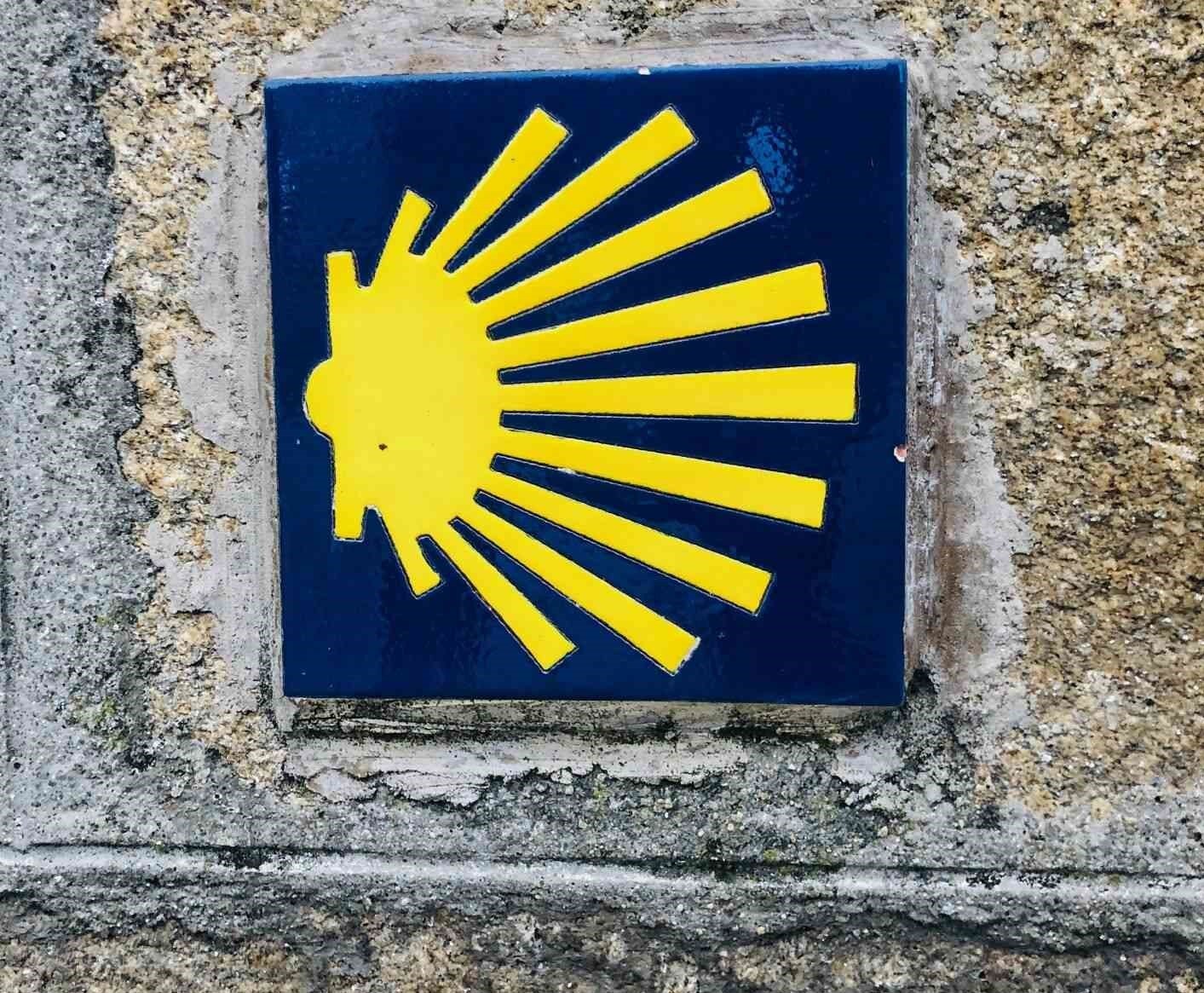Consider the Scallop Shell
A Pilgrim's Icon
Typical Marker Along the Camino
For over a thousand years, pilgrims have made the long, beautiful trek to Santiago de Compostela in northwestern Spain. They come from all over the Continent, following many paths. Even today, there is one Camino, but there are many ways; The Northern Way, the French Way, the Portuguese Way, and myriad others. And even the pilgrims that choose the same way have diverse reasons for their journeys. All these many ways come together at Santiago de Compostela. As the burial place of the Apostle St. James, Santiago takes its place alongside Rome and Jerusalem as part of the great trinity of Christian pilgrimages.
Like the journey itself, the icons and traditions surrounding the pilgrimage are diverse and multi-faceted. Perhaps no Camino icon is better known to the world than the scallop shell. They hang from every backpack. They decorate the directional markers on the trails. They are carved into the stone of churches and monasteries. The scallop is ubiquitous. But what exactly does the scallop symbolize?
There are many possible explanations. Perhaps only one explanation contains the truth or perhaps there is truth in all of them. Here are my favorites:
The shell is a metaphor for the universal experience of the Camino. Along the back of the shell, there are many ways (grooves), but they all merge into a central point. I love this explanation because I think the point of convergence does not even need to be Santiago. It could be the shared experience of the pilgrim. Or perhaps it could be the convergence of diversity, both spiritual and religious, towards a common purpose. Again, there is only one Camino. But there are many ways.
An explanation that always comforts me is the idea that the shell has a practical purpose. Pilgrims today have no need for the shell as a utensil for eating and drinking water, but for thousands of years shells have served this purpose. Carrying a shell today connects us with all those that have come before.
Another alternative is the Finisterre (End of the Earth) Theory. This theory posits that in the past, Pilgrims that had arrived to Santiago continued on to Finisterre, Spain’s easternmost point on the Atlantic Ocean. Here they would collect scallop shells and bring them home as proof that they had completed the pilgrimage.
The sunset theory holds that the scallop is formed in the shape of the setting sun. No matter what way you choose on the way to Santiago, you are always heading west towards the sunset.
I will add one more theory that is mine and is certainly unrelated to any historical tradition. I find it interesting that the scallop is the only mollusk that propels itself. It is a being in motion, constantly transporting itself to its next destination. Scallops seem to be pilgrims of sorts.
The theories presented above are no more or less important then other suppositions, some of which associate the scallop shell with St. James himself. Another very interesting fact is that the scallop shell can also be found in masques in southern Spain, indicating that it may have had spiritual meaning in other faiths. Like the Camino, the shell can have whatever meaning brings you the most joy. I hope that regardless of what the scallop shell means to you, your “Way” will eventually lead to Santiago.

